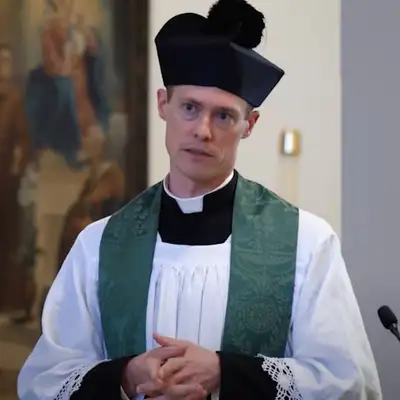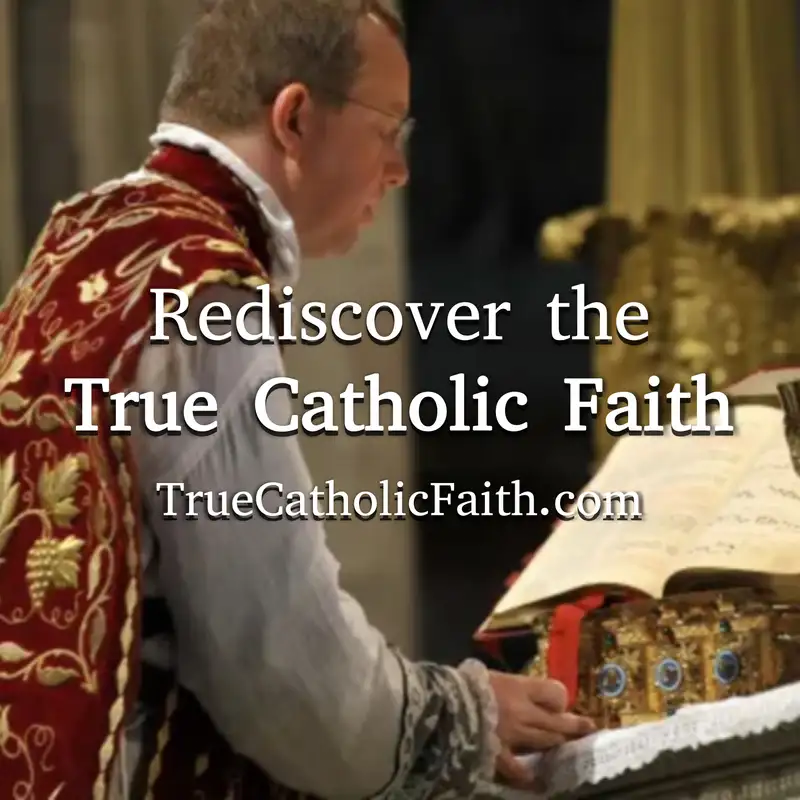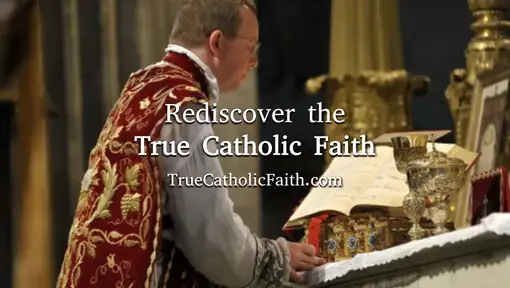The Present Crisis in the Church, Part I - Fr. Michael DeSaye 04-08-24
Download MP3Sermon on Indefectibility and the Necessity of Sedevacantism
1. Summary
Fr. Michael DeSaye explains why the Church is currently without a pope (sede vacante) and why this conclusion necessarily follows from the Catholic dogma of indefectibility. He shows that indefectibility means the Catholic Church cannot, on the universal level, lose or change the true faith handed down by the Apostles. Since Vatican II, the Novus Ordo liturgy, modern canon law, and new sacramental rites are clear defections from the Catholic religion, the men imposing them cannot be true popes. Holding otherwise implies the Church can defect, which is heretical in its consequences. Thus, the only way to preserve the dogma of indefectibility is to conclude that the Vatican II claimants to the papacy are not popes at all.
2. Historical / Doctrinal Context
- Indefectibility is a defined truth that the Church will always preserve the Catholic religion intact until the end of time.
- This was affirmed against Protestant claims that the Church fell into error and lost the true religion. The Church demanded that Protestants prove the moment of such “defection” — something history disproves.
- On the universal level, those with supreme authority (the pope) are divinely protected from imposing a false religion on the Church.
- Vatican II, the Novus Ordo Missae, and post-Conciliar reforms radically contradict prior Catholic teaching, worship, and discipline — thus they cannot have come from the true papal magisterium.
- The conclusion is not optional: either the Church has defected (impossible) or the men responsible were never true popes.
3. Key Quotes
- “The man who seems to be the Pope is certainly not the Pope… It is the virtue of faith telling us that he cannot be the Pope.”
- “The Church cannot lose its religion. Those who have universal power over the Church will never use that power to destroy the old religion and replace it with a new one.”
- “The Novus Ordo Mass is not a Catholic Mass. The teachings of Vatican II are not Catholic teachings. The moral law of the Code is not the Catholic moral law.”
- “There is no way to claim that the Vatican II popes are true popes without compromising the doctrine of the Church’s indefectibility.”
4. Key Points & Takeaways
- Sedevacantism simply means acknowledging the See of Peter is currently vacant — not a radical novelty, but a normal state when there is no reigning pope.
- This is different today because most of the world believes there is a pope, but Catholic faith shows otherwise.
- The argument is not based on appearances but on Catholic dogma.
- Indefectibility excludes the possibility of a true pope imposing false doctrine, false worship, or false laws universally.
- Vatican II and its reforms are objectively non-Catholic and therefore cannot come from the papal magisterium.
- Denying sedevacantism logically concedes that the Church can defect — contradicting Catholic dogma.
- Good will and ignorance may lessen personal culpability, but objectively the position that Vatican II popes are true popes is gravely erroneous.
5. Conclusion
Fr. DeSaye’s central point is that indefectibility and the claim that Vatican II popes are true popes cannot both be true. Since the Catholic Church cannot defect, the only consistent conclusion is that the Vatican II popes were never popes. This preserves the promises of Christ, the nature of the papacy, and the integrity of the Catholic religion. All other explanations fall into contradiction.
6. Sedevacantist Commentary (Pre-Vatican II Perspective)
Fr. DeSaye’s homily is fully in line with the perennial teaching of the Catholic Church as expressed by the First Vatican Council (Pastor Aeternus), Pope Pius IX (Syllabus of Errors), and Pope Pius XII (Mystici Corporis Christi).
The Catholic understanding of the papacy excludes the possibility of a pope using his authority to promulgate universal heresy, abolish true worship, or alter divine law. The crisis since Vatican II mirrors what Pope St. Pius X warned in Pascendi Dominici Gregis: modernists would attempt to reshape the Church from within, substituting a false religion under Catholic appearances.
The sedevacantist conclusion is not an emotional reaction but a theological necessity grounded in dogma. As Pope Leo XIII taught in Satis Cognitum, unity in faith with the Roman Pontiff is essential to being in the Church — and unity in a false faith is no unity at all.
Therefore, to remain Catholic, one must reject communion with those who propagate the counterfeit Vatican II religion. This preserves both the indefectibility of the Church and the papal office, awaiting a true successor of St. Peter who will restore all things in Christ.
Creators and Guests

Guest
Fr. Michael DeSaye
Rev. Michael G. DeSaye, originally ordained a priest in the Diocese of Trenton, New Jersey, on June 2, 2018, has since become a Roman Catholic priest within the sedevacantist tradition. He concluded that his initial ordination was invalid because it was performed by a non-bishop, specifically a Modernist layman, rather than a valid Roman Catholic bishop, and that the Novus Ordo Church he served was a counterfeit institution. After resigning from the Diocese of Trenton in May 2021, he was received into the sedevacantist movement and pursued studies at Most Holy Trinity Seminary in Brooksville, Florida. He was ordained a deacon and later a priest on June 29, 2022, by sedevacantist bishops Donald Sanborn and Joseph Selway, marking his transition from a Novus Ordo priest to a Roman Catholic priest according to his understanding of the faith. Since his ordination, he has been active in preaching, including delivering sermons such as "Ignorance and Faith" in 2024.

